Future forward: Didier Courbot on how Rei Kawakubo created furniture ahead of its time
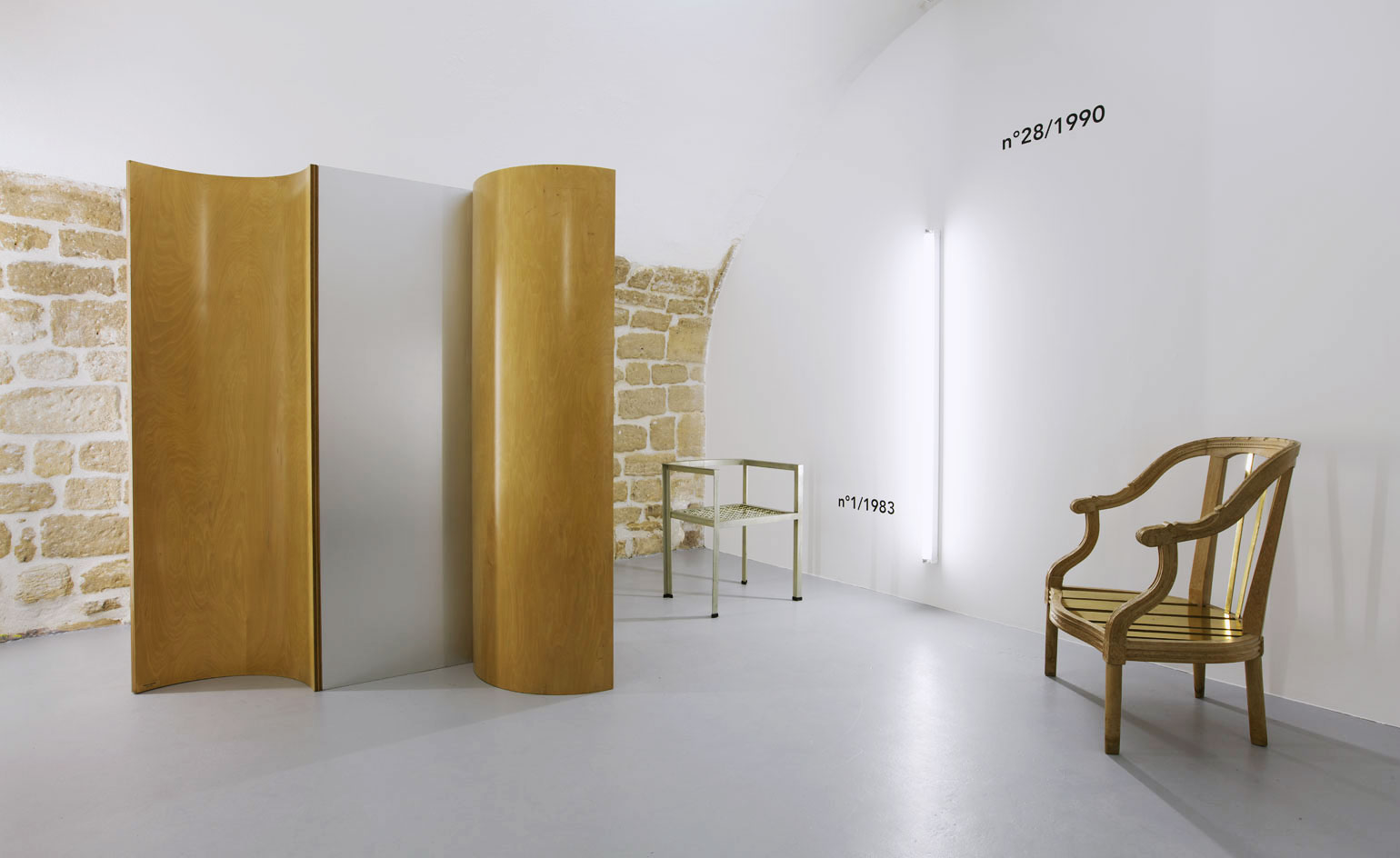
Upon arriving at the Paris gallery, A1043, it becomes clear in an instant that the chairs running the length of the space seem less than hospitable. One seat consists of fence-like wire; another offers a triangular seat with two chains slung as meagre back support. The most extreme of the lot boasts a coiled steel base and upright rod, which give the impression of a Bauhaus prototype gone awry. But the fact that they appear so unwelcoming contributes to the intrigue stirred up by knowing who designed them: none other than Rei Kawakubo, the elusive visionary behind Comme des Garçons.
Gallery owners Didier Jean Anicet Courbot and partner Stéphanie Laurent Courbot have spent the better part of three years collecting furniture that Kawakubo designed between 1983-93. When the couple, who opened their space in 2016, began developing an interest in this niche category from the cult fashion brand, they soon realised how obscure the creations had become. Only after amassing 15 original pieces from across Europe, the US and Japan did they feel ready to mount a show, which furthers their mandate of pursuing a conceptual approach to contemporary design.
‘This is furniture that was designed around the idea of transit,’ said Didier Courbot during a walkthrough. ‘[Kawakubo] thought of it as temporary furniture and I love that idea – that you might sit, but only for five minutes. There’s this idea of movement.’ Accordingly, they envisaged an ultra-minimalist staging with neon tubes installed vertically at various intervals to create a dynamic atmosphere, as though speeding through a highway tunnel.
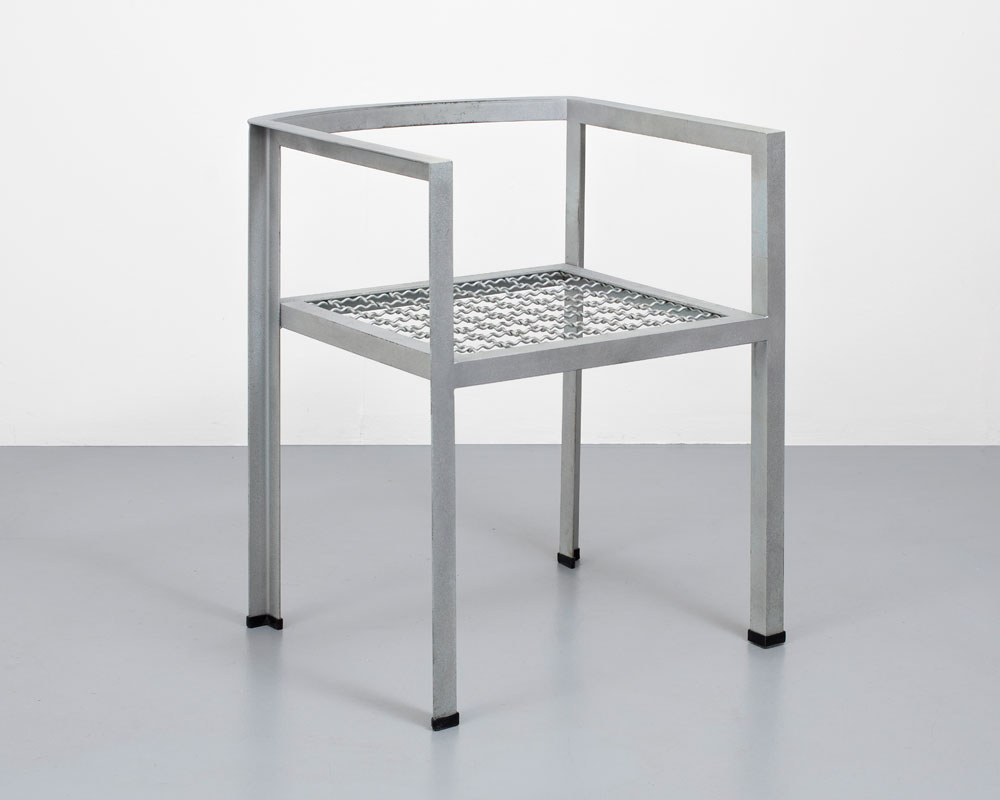
Chaise n°1’, 1983
Within the more spacious lower level can be found the rarest piece among the grouping: a sinuous three-part screen in Japanese linden, its central partition over-paneled in aluminium. There’s also Kawakubo’s striking interpretation of a Louis XV-style armchair that is faithful to the ornamented French frame, only reconstructed in Japan and left unvarnished with plated brass panels along the seat. Compared to the other pieces, it veers towards baroque.
The final space features a table with a double-stacked top, plus two sets of chairs with vented backs, all created in 1987. The table, in particular, reveals its previous life, most likely as a work desk; if anything, it signals that the furniture was used, not simply conceived as objets d’art.
Indeed, Didier notes that just as Kawakubo has historically rejected the label of fashion designer, she would similarly eschew any notion that this series, numbered chronologically, represents art. Yet for enthusiasts, their limited function and contemplative forms easily qualify as such. ‘She’s someone who refuses to see herself as an artist; but in reality, she’s an artist,’ he said.
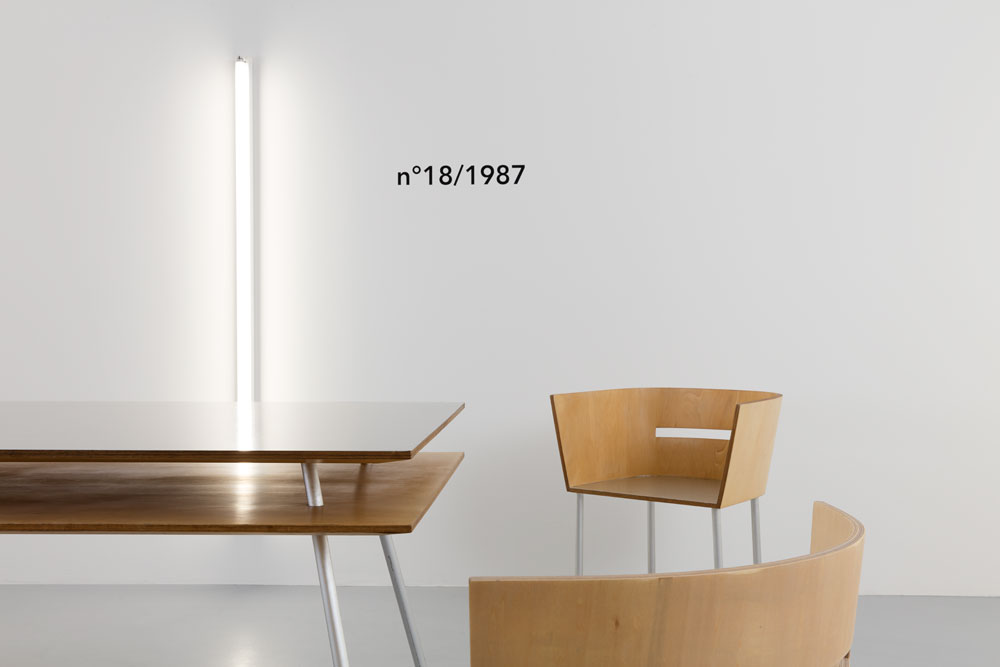
Installation view of Rei Kawakubo’s furniture at A1043. Courtesy of Galerie A1043 and Rei Kawakubo
As store fixtures that were available for purchase, the numbered models – approximately 40 in total – would have supported her aesthetic, whether or not they were intended for wider distribution. Didier suggests they were ‘a total commercial failure’ on account of being ‘too ahead of their time.’
Or else, the lack of comfort proved the deal-breaker. ‘It’s not made to be comfortable, but it’s also not a sculpture,’ explained Stéphanie. ‘It doesn’t have a classic definition; it’s outside the codes.’ Which is what will likely appeal to collectors some 25 years later. As Didier, himself an artist, pointed out, ‘what's interesting is that design can often evolve from people who do not work in design.’
And he’s sure enough of the collection’s resonance today that beyond this show, he imagines re-editing the pieces so that more people can ultimately enjoy them – seated or not.
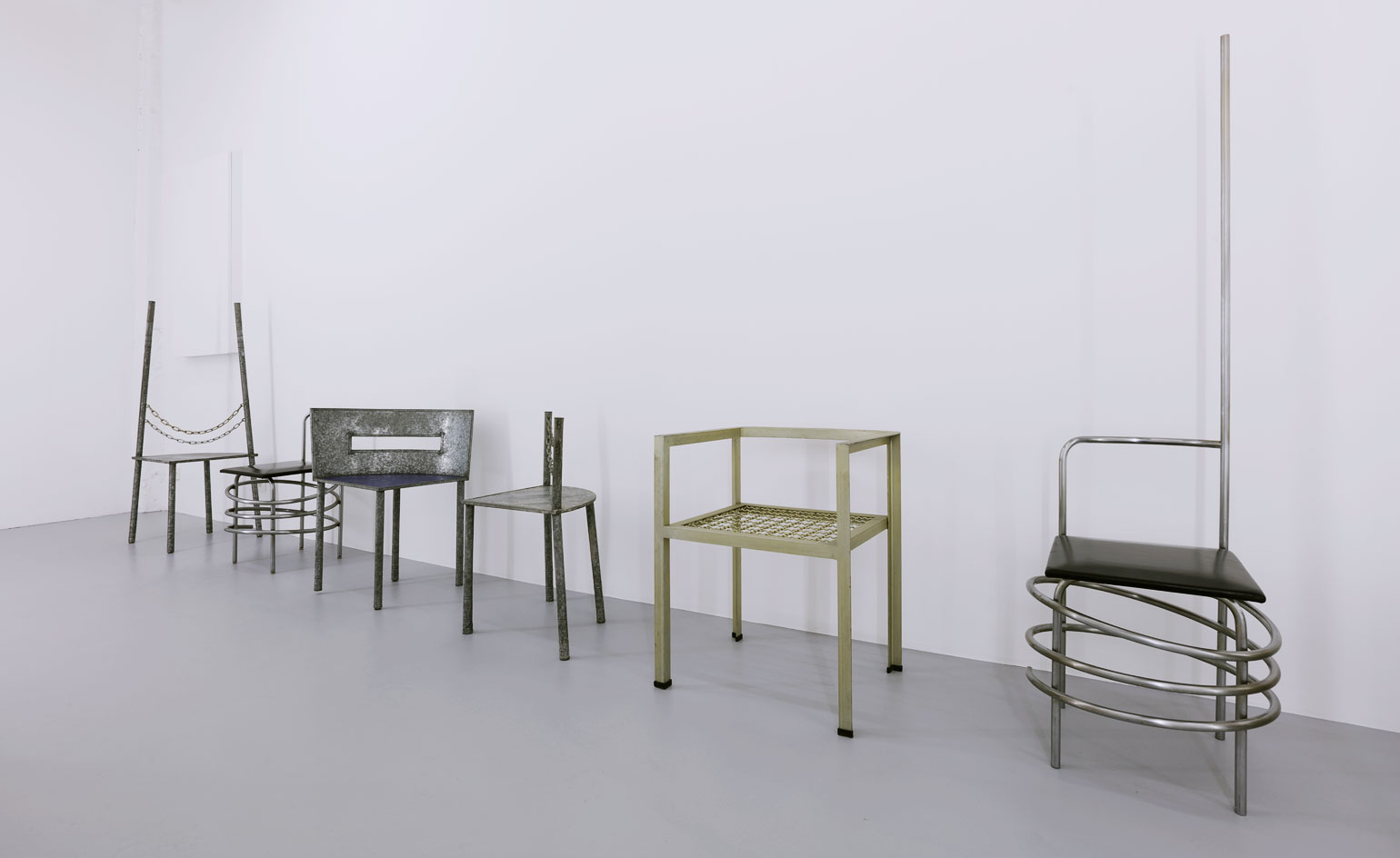
The furniture was designed around the idea of transit, explains gallerist Didier Courbot
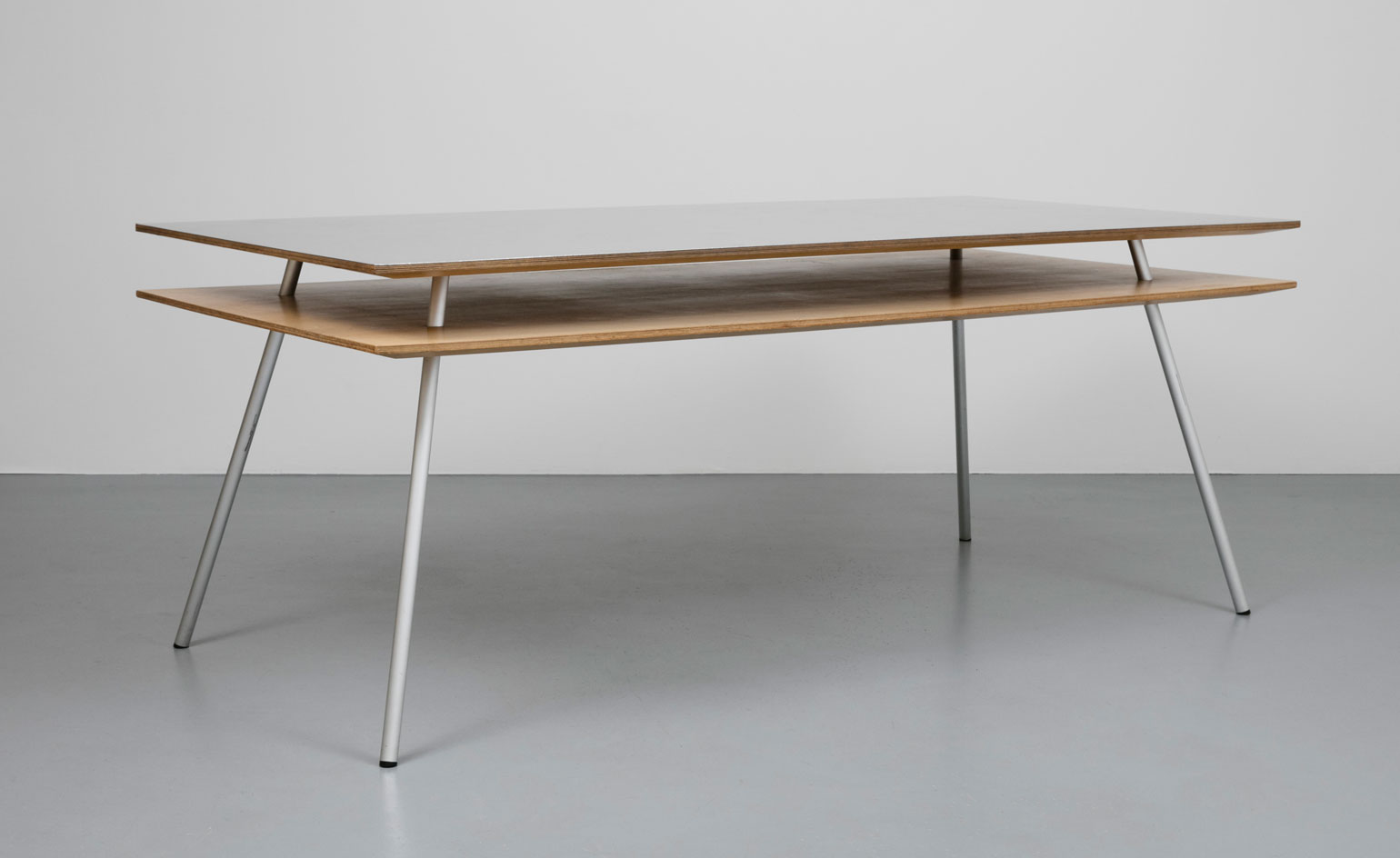
‘Table n°18’, 1987, Japanese lime and aluminium
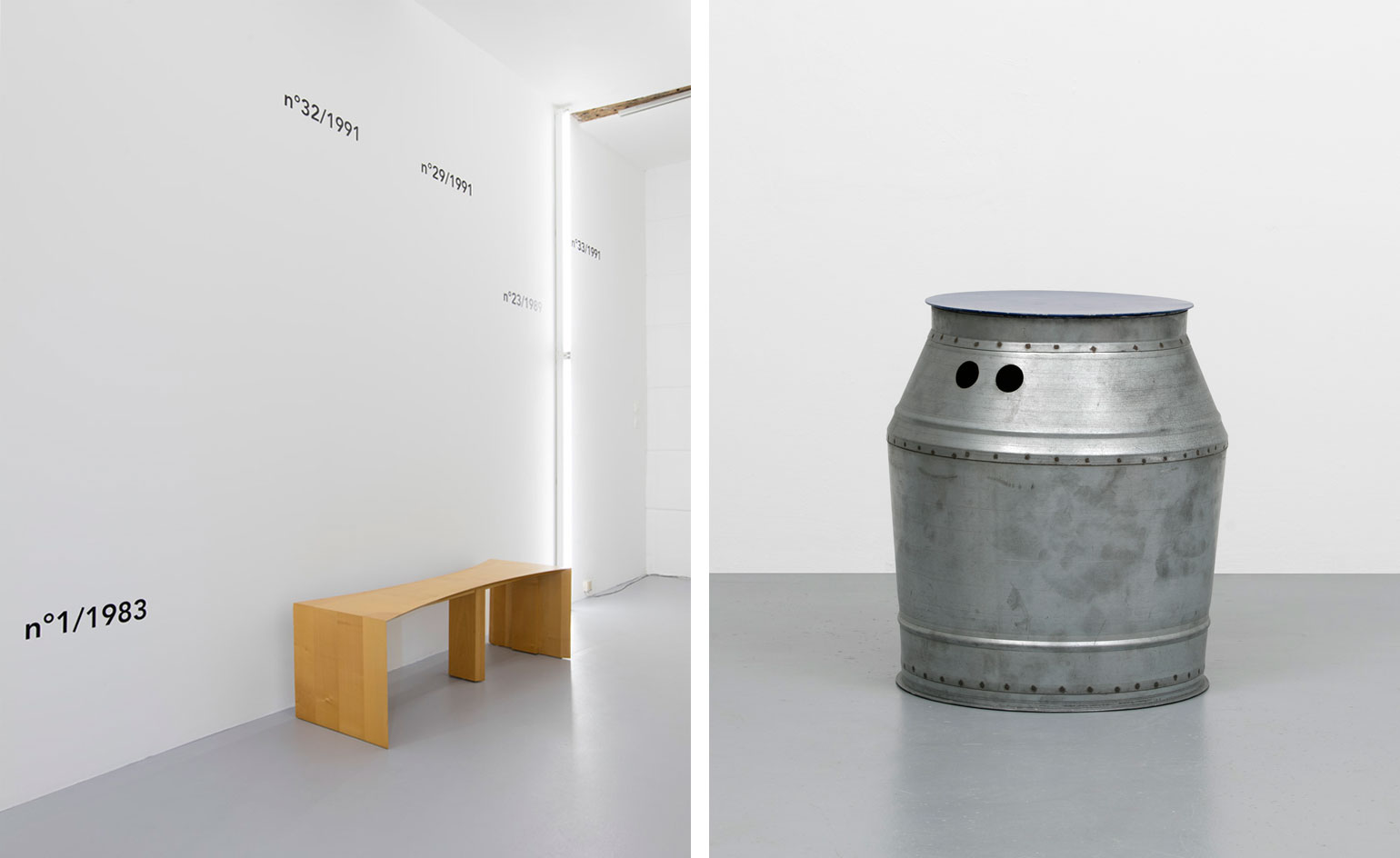
Left, an ultra-minimalist staging with neon tubes installed vertically at various intervals create a dynamic atmosphere. Right, ‘Tabouret n°XX’, 1991
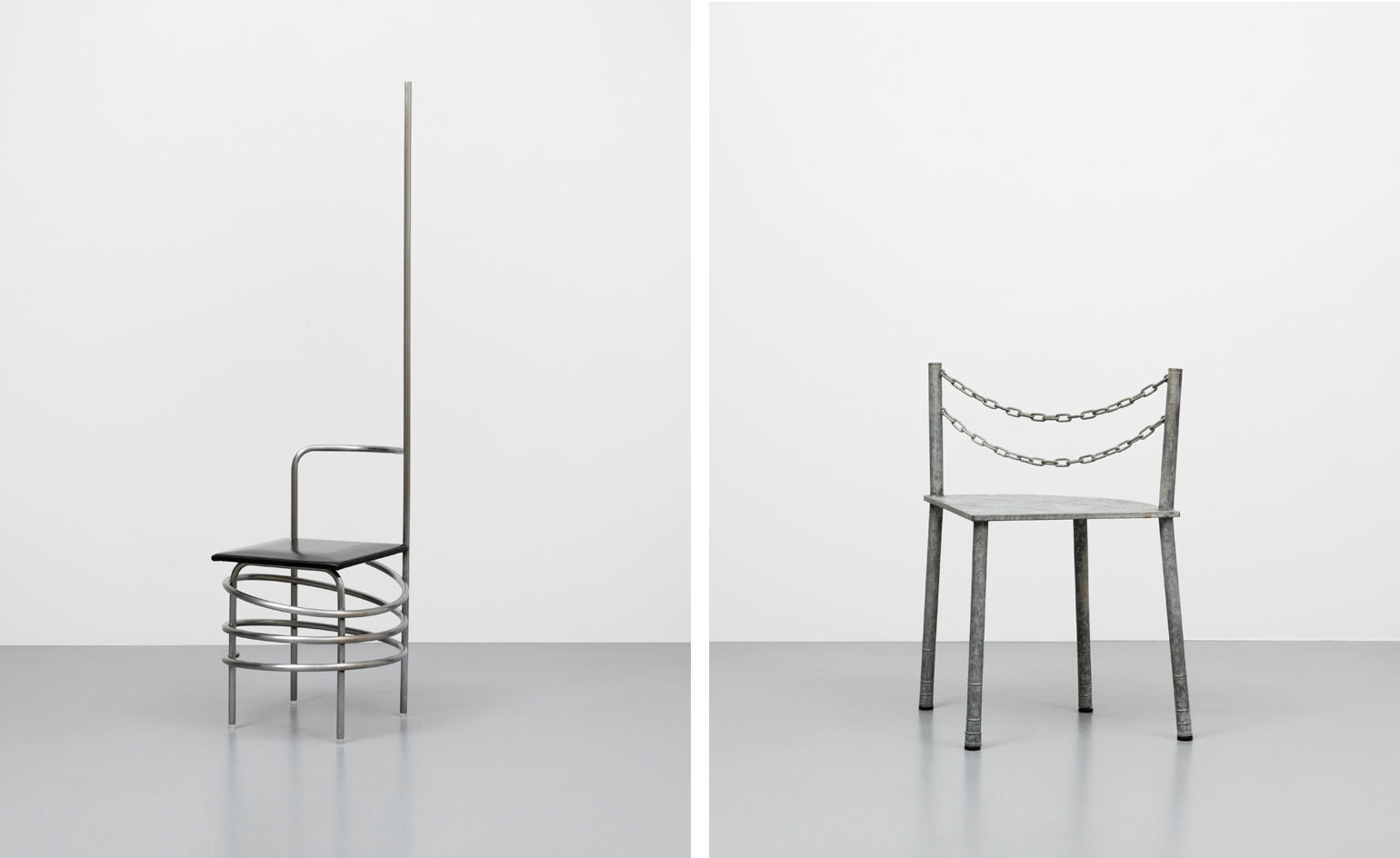
‘Chaise n°24’, 1989, (left) and ‘Chaise n°32’, 1991
INFORMATION
‘The Furniture of Rei Kawakubo’ is on view until 22 December. For more information, visit the A1043 website
ADDRESS
A1043
47 rue de Montmorency
75003 Paris
Receive our daily digest of inspiration, escapism and design stories from around the world direct to your inbox.
-
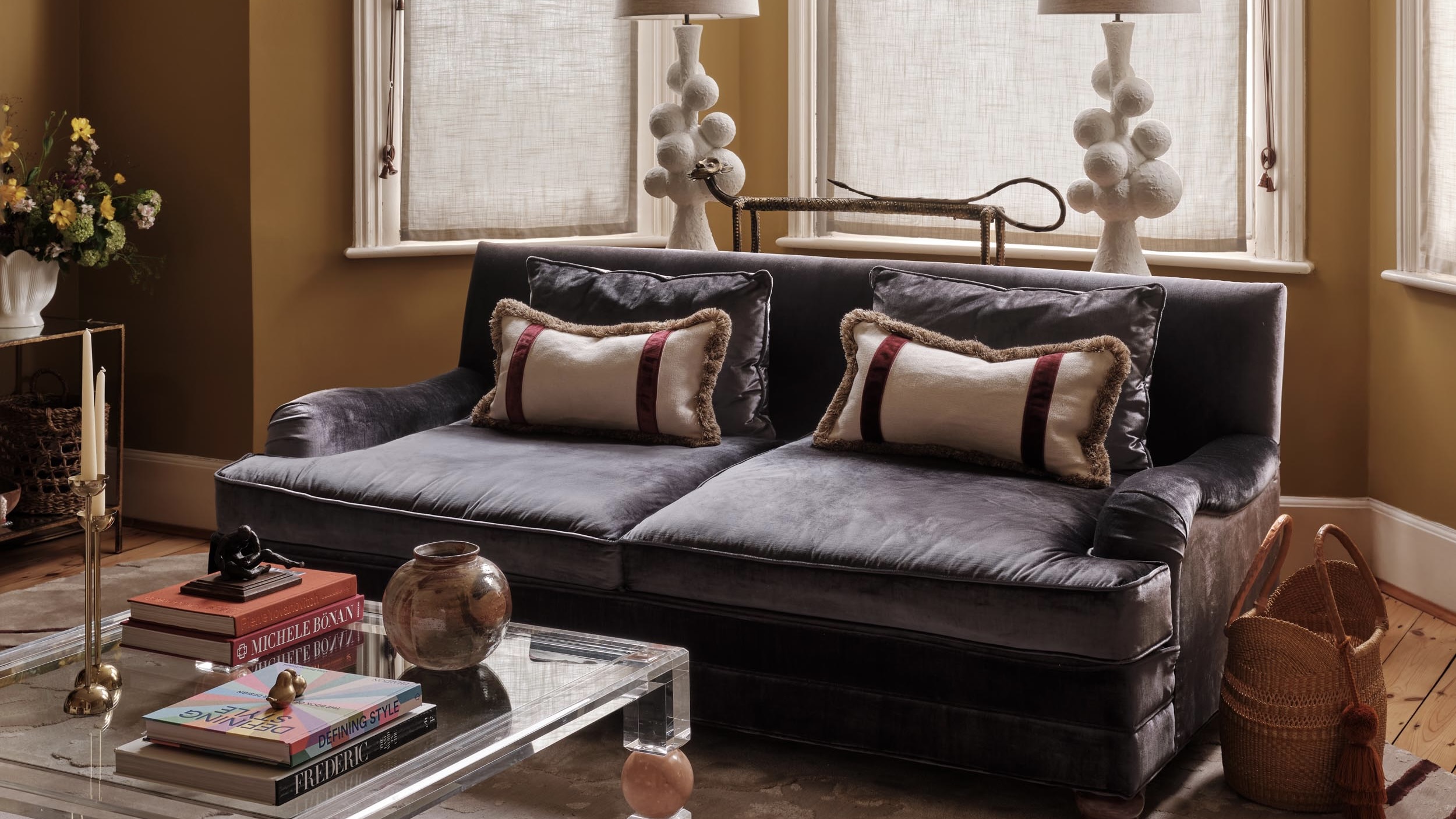 How to elevate a rental with minimal interventions? Charu Gandhi has nailed it with her London home
How to elevate a rental with minimal interventions? Charu Gandhi has nailed it with her London homeFocus on key spaces, work with inherited details, and go big on colour and texture, says Gandhi, an interior designer set on beautifying her tired rental
-
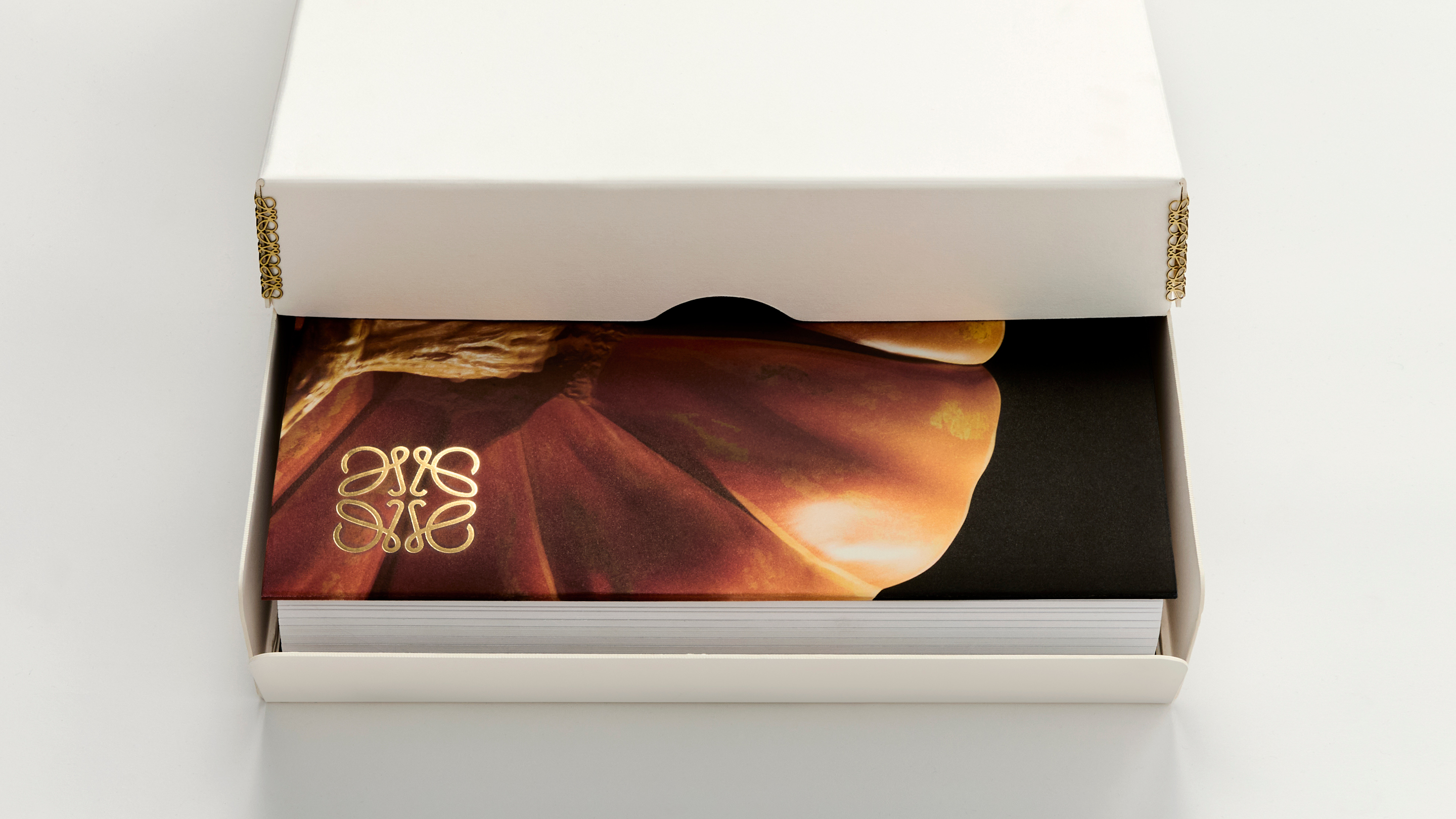 These fashion books, all released in 2025, are the perfect gift for style fans
These fashion books, all released in 2025, are the perfect gift for style fansChosen by the Wallpaper* style editors to inspire, intrigue and delight, these visually enticing tomes for your fashion library span from lush surveys on Loewe and Louis Vuitton to the rebellious style of Rick Owens and Jean Paul Gaultier
-
 Out of office: The Wallpaper* editors’ picks of the week
Out of office: The Wallpaper* editors’ picks of the weekFar from slowing down for the festive season, the Wallpaper* team is in full swing, hopping from events to openings this week. Sometimes work can feel like play – and we also had time for some festive cocktails and cinematic releases
-
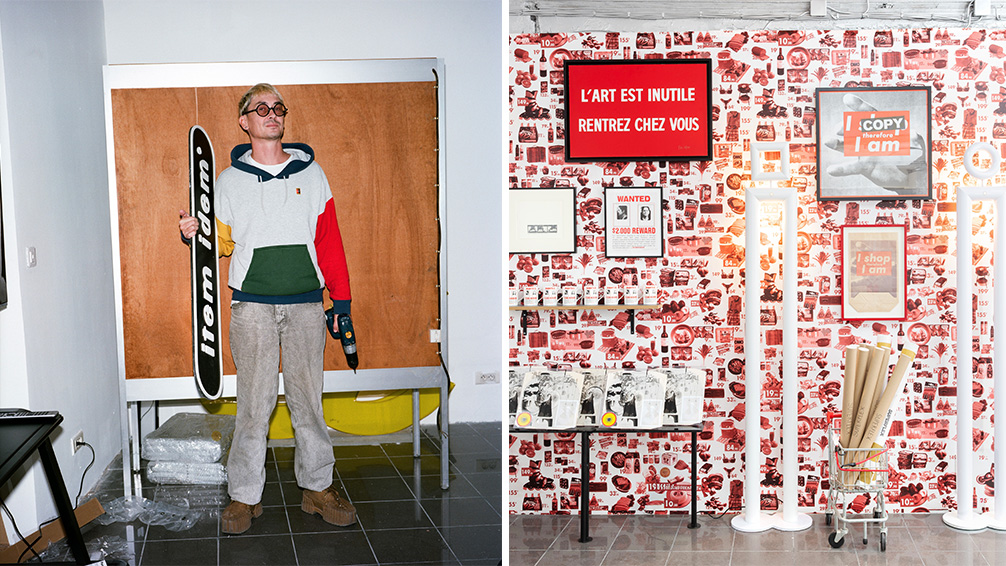 Is this Paris' most design-focused holiday shop?
Is this Paris' most design-focused holiday shop?Shop weird and wonderful design and fashion at this playful, postmodern exhibition from Item Idem, where commerce, culture and humour intersect
-
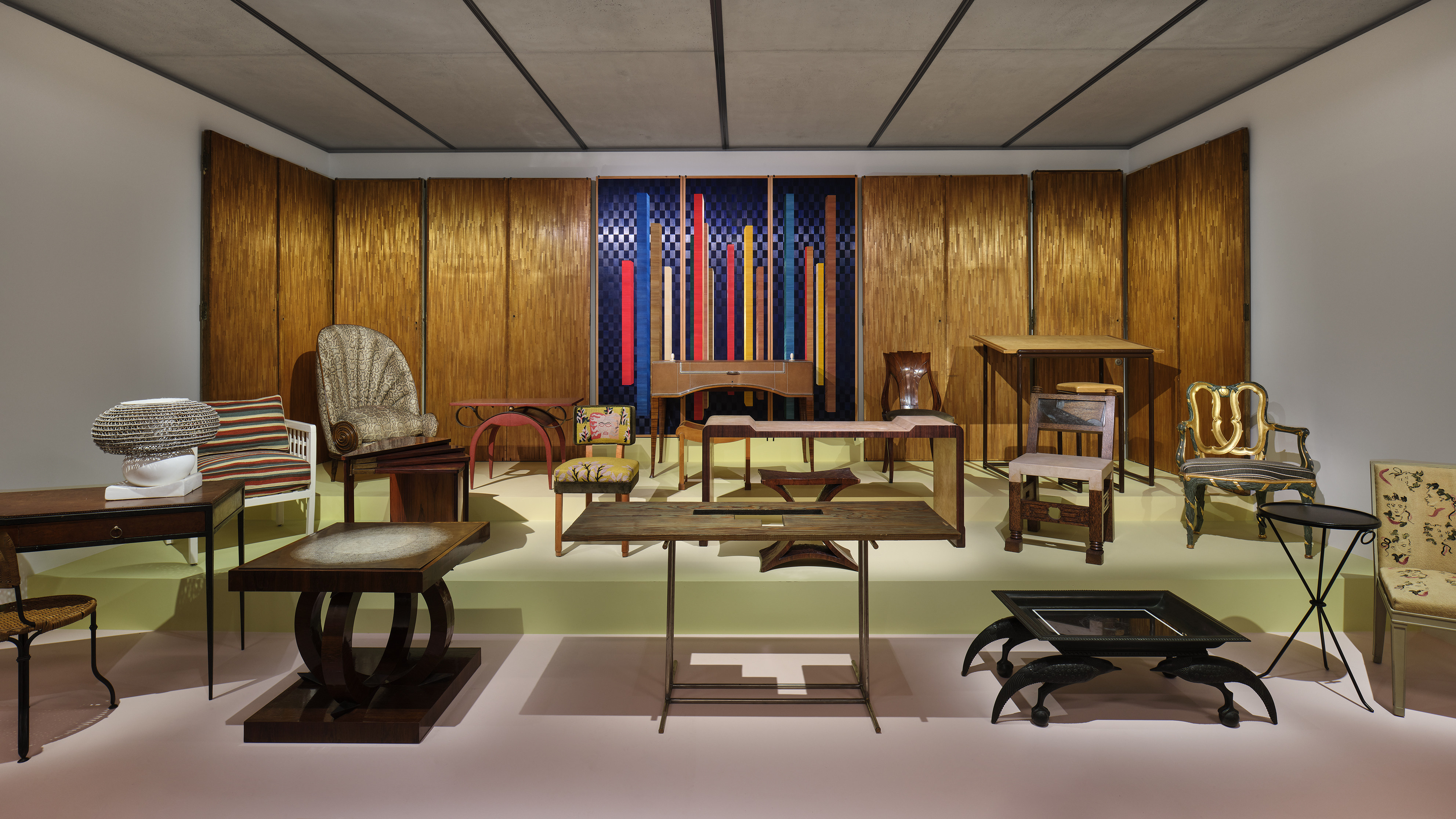 Art Deco's centenary is honoured with a grand exhibition in Paris
Art Deco's centenary is honoured with a grand exhibition in ParisTo mark 100 years of Art Deco, the Musée des Arts Décoratifs in Paris is holding a retrospective that includes furniture, tableware, clothing, jewellery and objets d’art (on view until 26 April 2026)
-
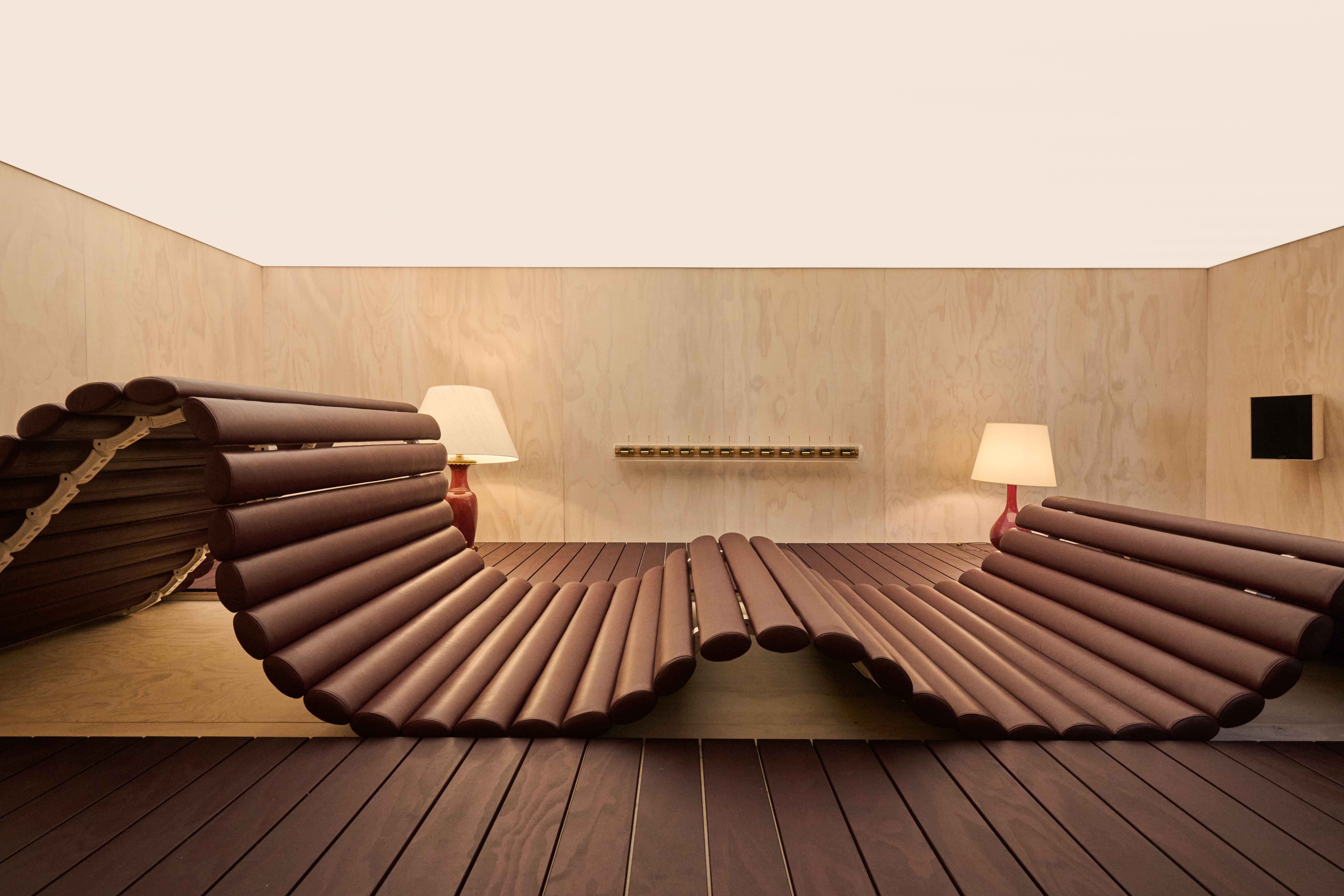 Best of Design Miami Paris 2025: animal sculptures and musical ping-pong tables
Best of Design Miami Paris 2025: animal sculptures and musical ping-pong tablesDesign Miami Paris returns to the Hôtel de Maisons (until 26 October 2025): here are the Wallpaper* highlights
-
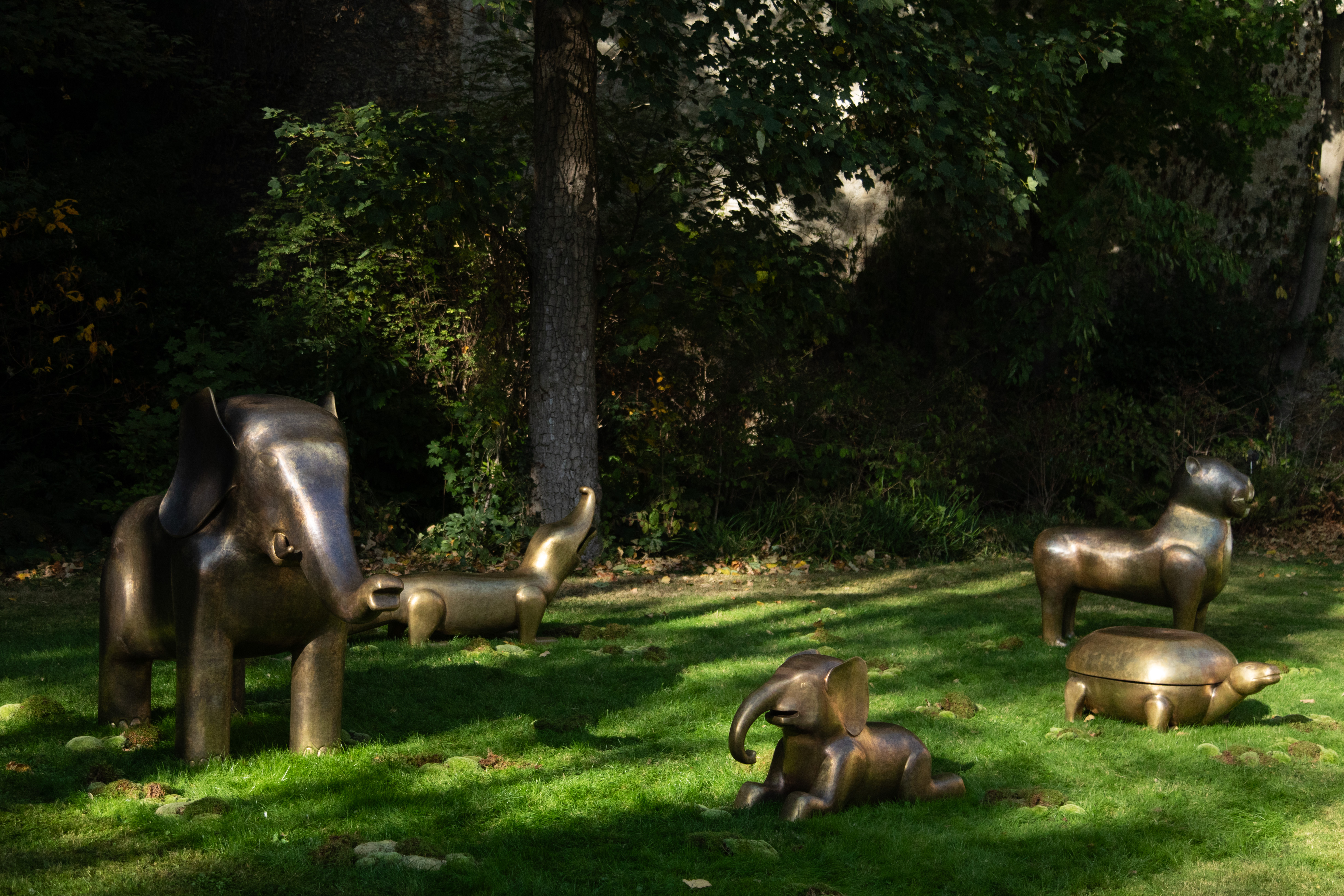 At Design Miami Paris, an artful menagerie tells a story of scent and nature
At Design Miami Paris, an artful menagerie tells a story of scent and natureVikram Goyal and Sissel Tolaas present ‘The Soul Garden’ at Design Miami Paris (until 26 October 2025), ‘a contemporary fable where the animals take new forms, reimagined for the world we live in today’
-
 These are the best design exhibitions to see in Paris this week
These are the best design exhibitions to see in Paris this weekAs Design Miami Paris and Art Basel Paris make their return, we round up the best design exhibitions to discover in the city
-
 A monumental exhibition of French design revives the spirit of art deco for contemporary times
A monumental exhibition of French design revives the spirit of art deco for contemporary timesThe Galerie des Gobelins hosts the inaugural Salon des Nouveaux Ensembliers, a contemporary movement inspired by art deco’s grand traditions
-
 ‘The club is the place where everything is possible’: this Paris Design Week exhibition is conceived as a disco
‘The club is the place where everything is possible’: this Paris Design Week exhibition is conceived as a disco‘Design Disco Club’, curated by Christopher Dessus during Paris Design Week 2025, presents 30 emerging designers in a dark, disco-like environment
-
 Postcard from Paris Design Week 2025
Postcard from Paris Design Week 2025As the French capital inaugurates the autumn design calendar, we look at the highlights from Paris Design Week 2025 (4-13 September)